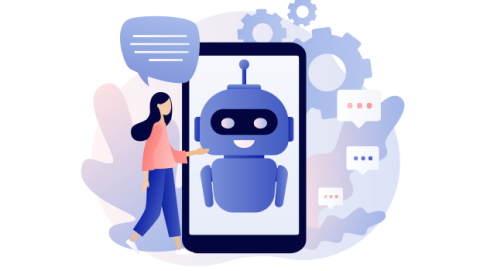ChatGPT: Top 3 industries that can benefit now
ChatGPT has taken the world by storm. The large language model (LLM) reached 100 million active users just two months after its launch, setting a record for the fastest user growth in a web platform.
When encountering ChatGPT and other LLMs for the first time, many users react with awe, excitement, fear, and curiosity. Its potential impact on the digital ecosystem, particularly in the realm of digital content, information technology, and written communication is profound.
LLMs enable many innovative breakthroughs, especially with the application of the natural language processing transformer paradigm to large training sets customized to the enterprise. Because of this potential, CIOs across all industries will be considering the adoption of ChatGPT and other conversational text-to-speech and research-oriented LLMs.
The opportunity for ChatGPT adoption, especially as soon as OpenAI makes it available as a full-fledged application programming interface (API) endpoint, will enable powerful workflows and amplify its already impressive capabilities.
[ Also read ChatGPT: 3 ways it will impact IT support. ]
While not all industries will be able to implement the technology and see immediate results, CIOs in the following three industries have both the most to gain and the agility to do so quickly.
Pharmaceuticals
Researching and developing new medicines has become increasingly time-consuming. On average, it takes at least 10 years for new drugs to reach the market and six to seven years to conduct clinical trials.
ChatGPT has the potential to accelerate that time to market because it can infer data from multiple parallel treatment plans. It can then quickly create insights and correlations from those vast amounts of data points to enable a better understanding of clinical trial outcomes.
It could also transform customer management. An estimated 66 percent of all U.S. adults – more than 131 million people – use prescription drugs. However, the FDA receives more than 100,000 reports of medication errors each year from pharmacies, hospitals, and patient homes. ChatGPT can improve that margin of error. Instead of being connected to an agent when getting a prescription refilled, ChatGPT or a similar technology – with a transformer text-to-speech engine and differentially private training data behind it – can message customers to correctly fill their prescriptions.
Wealth management
Staffing shortages have handicapped multiple industries, including finance. A recent Charles Schwab survey of financial advisers found recruiting and retaining talent is the top strategic priority for the first time since 2006.
ChatGPT can be used as a conversational agent with enterprise-specific data sets to message and advise customers. By providing efficient, high-level financial education, it could dramatically extend the bandwidth of customer representatives, or even eliminate the need for the role. (However, regulatory boundaries will dictate the extent of these use cases.)
ChatGPT won’t eliminate the roles of those who have access to sensitive financial information or who perform transactions on behalf of the customer. It lacks the necessary background context – for example, the customer’s account balances or the historical trends of that individual’s financial history – to make accurate insights. But in the short term, enterprise incarnations of transactional, conversational, or LLMs leveraging RLHF (reinforced learning from human feedback) can take more prominent roles, with implications to replace jobs currently performed exclusively by humans.
Automotive
Rising commodity prices and supply chain shortages have impacted the automotive industry for several years. CIOs can leverage ChatGPT as a research tool to track industry trends, scan the market for certain parts, and analyze competing supply chain processes to ensure they’re using the right procedures day-to-day to mitigate profit losses.
Enterprise leaders can also utilize ChatGPT to analyze large data sets of parts and procedures. This can improve the creation and maintenance of things like manuals, part catalogs, and operational procedures to unlock new efficiencies. It could also be used to build large knowledge capitals for new part providers, who often lack the documentation advantage of incumbent providers.
ChatGPT’s wildfire popularity has made it the poster child for LLMs and other language processors. But we’re only scratching the surface of what the technology behind ChatGPT can achieve. We know it stands to make a lasting impact on society in a multitude of ways, and it’s that unknown potential that creates buzz and excitement.
Whether it be an AI-specific workflow, AI as a service, or an applied LLM, the next breakthrough is undoubtedly just around the corner. IT leaders – particularly in these three industries – will need to be creative, adaptable, and open to the numerous benefits it can bring.
The original article can be found at
https://enterprisersproject.com/article/2023/3/chatgpt-top-3-industries-can-benefit-now







